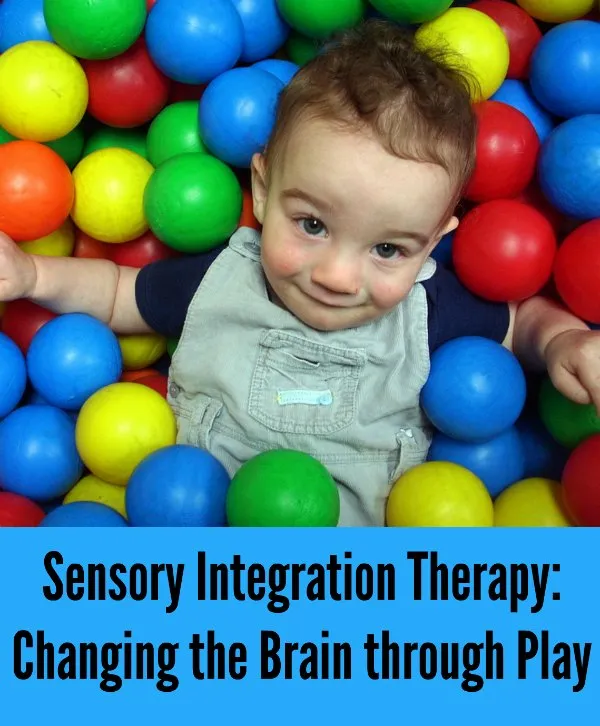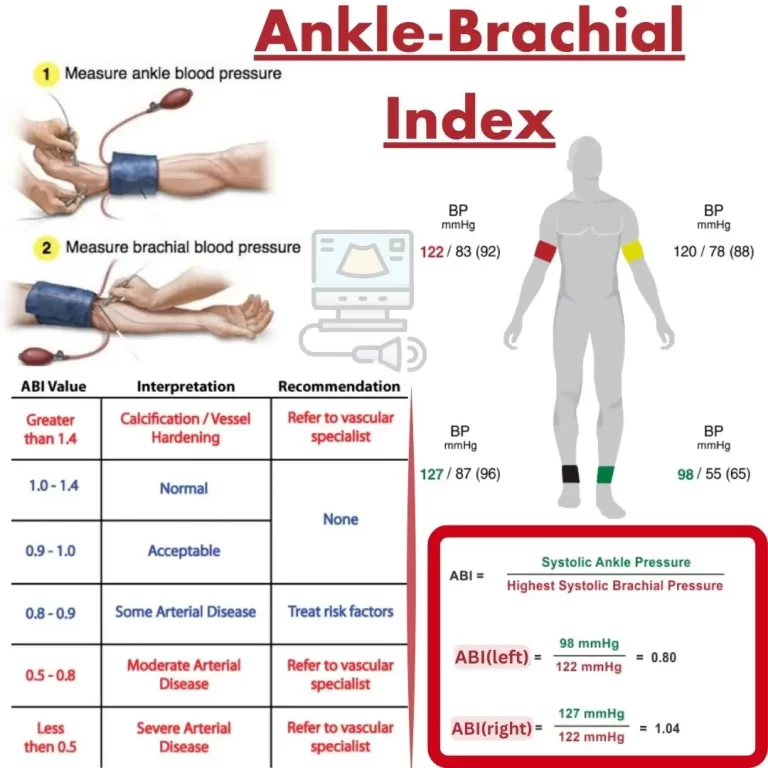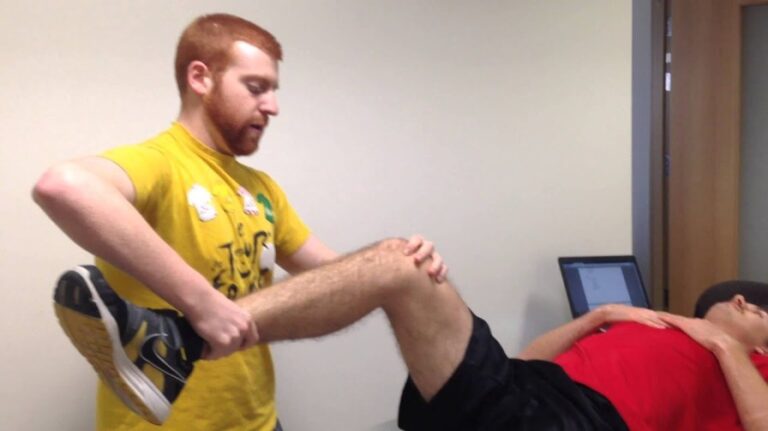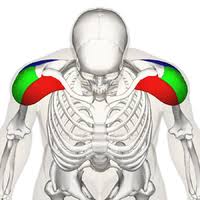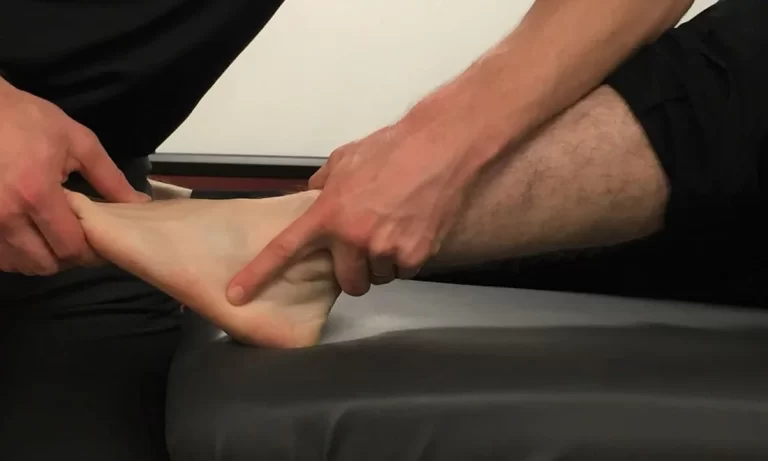Sensory Integration Therapy
Sensory integration Therapy has been used in brain-related conditions that allow patients to take the information they receive from the 5 senses, organize it, and respond appropriately. The human brain also has a vestibular sense (balance) that tells us how to position bodies and heads, and a proprioceptive sense (awareness of the body in space) that helps us know what to do with joints, muscles, and ligaments.
Sensory integration therapy is used to help children to learn all their senses together such as touch, smell, taste, sight, and hearing. this therapy helps to improve challenging behavior or repetitive behavior. These behaviors can be related to difficulties with processing sensory information in the brain.
When Sensory integration therapy is applied to a patient through sensory stimulation in a structured, repetitive way, the brain will learn, adapt and allow a patient to process and respond to sensations more efficiently.
Sensory Processing Deficits and Children with Autism Spectrum Disorders (ASDs)
In children who have Autism, sensory processing deficits have been commonly seen which causes difficulties that affect child behavior and developmental learning skills delayed. In this condition, children may be hypersensitive or hyposensitive to stimuli in their nearby area. Loud music, for instance, may cause discomfort, while bright fluorescent lights that trouble others may be relieving to some children with ASDs
Children with sensory deficits may also have difficulty with motor learning skills, un-balance, and in-coordination.
Some children will look to improve certain sensations and perform self-stimulating behaviors like rocking back and forth, head banging, and oral exploration of nonedible items.
What is Sensory Integration Therapy?
Sensory integration therapy, which was evolved in the 1970s by an Occupational Therapist, A. Jean Ayres, is created to help children with sensory-processing problems such as ASDs to improve with the difficulties they have processing sensory stimulation. Treatment sessions are play-oriented and may use tools such as swings, trampolines, and slides.
In Sensory integration therapy, various manual techniques are also used such as deep pressure, brushing, weighted vests, and swinging. These treatment helps to calm an anxious child. Other benefits are believed to increase a child’s threshold for tolerating sensory-rich environments, make transitions less disturbing, and improve positive behaviors.
Effectiveness of Sensory Integration Therapy
Although there are scientific studies to show that in children with Cerebral palsy, ASDs are more likely to have sensory-processing difficulty, the effectiveness of sensory integration therapy as a therapy for ASDs is limited and unproven. While this does not mean that SI therapy might not be helpful in a few children, efficacy so far is mainly based on personal experiences.
Talk with your child’s Doctor if you suspect that your child has difficulties with sensory processing; there may be required in the community for further examination.
If Cerebral Palsy or children born prematurely can display symptoms of abnormal sensory function, and abnormal sensory processing, whether it may be decreased or increased. Abnormal Sensory function can make a child appear awkward when he or she walks, or create difficulty with fine motor skills such as pencil control, which, in turn, can lead to difficulty in writing ability.
Abnormal Sensory function can also cause over or under-sensitivities that lead to mental and physical distraction or fatigue. Problems with sight, hearing, and balance can be treated through sensory integration therapy.
The sensory dysfunction also seen in children with Cerebral Palsy are:
- Auditory – hearing
- Olfactory – smell
- Oral – taste
Proprioception stimulation – unaware details obtained by the muscles and joints related to the body position in surrounding space, the weight of the item, the pressures felt, the stretch, body movement, and position changes.
Tactile or somatosensory stimulation – Touch
Vestibular processing – unaware details obtained through the inner ear for equilibrium, position in surrounding space, and gravity.
Vision
A child’s sensory stimulation is dysfunctional if they are:
- Over-responsive – avoidance, caution, and fearful
- Sensory seeking – impulsive and takes risks
- Under-responsive – withdrawn, passive or difficult to engage
The aim of sensory integration therapy are:
- Help children with perception problems in resolving mixed stimulation
- Create a physical environment that encourages the patient in activities that depend on the senses
- Determine how a child’s specific sensory stimulation affects their overall physical, social, and human development
- Motivate children to do activities to explore their environment, learn and develop their senses
- Identify and remove barriers caused by an abnormal perception
- applying new sensory integration methods- approaches that organize multiple sensations, filter out background stimuli, and repay for deficits in sensory function
- Improve a child’s sense of body position and function (also called vestibular and proprioception)
- Improve motor functions (praxis) capabilities, so a child can focus on his or her senses to get the desired movement, respond to other’s movements, and understand the body’s relationship to the surrounding space
Signs that a child might be having difficulty with his or her sensory stimulation such as:
- Difficulty in sitting or standing
- Feeling too hot or too cold
- High, or low, physical activity levels
- Difficulty in performing a task with the necessary physical function
- Inappropriate physical responses
- Lack of physical coordination
- Little reaction to external events
- Low self-esteem
- Over-sensitivity, or under-sensitivity, to touch
- Restlessness and behavior issues
- Reclusiveness
- Speech delays
- Strong reactions to textures, food, and sound
Who benefits from sensory integration therapy?
Children are the largest beneficiary of sensory integration therapy, but parents and caregivers also benefit.
By applying proper strategies to treat the condition, therapists help children to manage these issues that, at least initially, may seem overwhelming. Success is achieved by applying treatment that will help children to build the mental and physical structure within their central nervous system to properly receive sensory input, monitor their responses, and realize the importance of particular, textures, movements, or sounds.
All of these skills must be trained for a child to maximally benefit from other therapies.
Benefits of sensory integration therapy include:
- To understand action and outcome
- Correctly understand sensory input
- Create physical equilibrium and a sense of surrounding space
- Create positive behavior patterns
- Remove fear
- Encourage play and socialization
- Lessen sensory defensiveness
- Minimize input intolerance
- Reduce negative physical reactions
- Parents and caregivers also useful from sensory integration therapy because they learn how to creatively interact with their children, highly improving the relationship
SI Therapy also improves a child’s tone, or ability to control neural messages in such a way they can react to stimuli properly. The benefits of SI therapy are often physical, as well psychological.
The physical benefits of therapy include;
- Balance responsivity – over-responsivity and under responsivity
- Gravitational security
- Hand-eye coordination
- Improved motor-planning
- Improved sleep cycles
- Language development
- Posture
The psychological benefits of SI therapy are:
- Improve Attention
- Improve Confidence
- Improve Emotional outbursts and frustration
- Improve Moodiness
- Improve Procrastination
- Improve Restlessness
- Improve Socialization
When is sensory integration therapy advised?
- Sensory integration therapy is advised by a Doctor after a qualified Physical Therapist or occupational therapist completes his or her assessment of a child. Treatment is usually started early in a child’s development – sensory deficits should be dealt with in infancy if possible to give children the benefit of learning to adjust and repay for their condition as he or she develops.
Addressing sensory deficits early improves:
- Capacity to learn
- Cognitive function
- Emotional well-being
- Physical function
- readiness to make friends and socialize
What happens during sensory integration therapy?
Sensory integration therapy started with a complete examination and assessment of a child’s sensitivity to the environment. This assessment also includes interviews with a child’s parents or caregivers, a health history, standard tests, and observation in a clinical setting. The aim is to understand where deficits in a child’s sensory understanding are and what interventions will help a child adjust and react to their surrounding environment.
A SI therapist will use Sensory Integration and Praxis Tests (SIPT). During the examination, the SI therapist will aseess:
- Body positioning in relation to surrounding space and objects
- Existing sensory-seeking behaviors
- Eye-hand coordination
- Modulation
- Motor planning (praxis)
- Movement perception
- Planning and sequencing actions
- Reaction to touch, sounds, and textures
- Spontaneous activity and play
- Visual perception and eye movement
The SI therapist will make a treatment plan mainly activities that encourage organized responses to a particular sensory input. Activities are practiced daily in a repetitive and continuous, so children can learn and engage in the process. They learn how to self-regulate their reaction, achieve a comfort level with sensations, and understand how the senses work simultaneously.
SI therapy is often counted as a “fun activity” for the child. The aim of SI therapy is to allow children to explore in a free environment that allows them to make their well organize interpretations and responses. such as when a child that is uncomfortable with rough surfaces may play with grains of rice, so he or she can get used to its texture – which in turn counteracts their discomfort with the sensations.
Sensory Integration Therapy is eventually successful when the child understands the value of the outcome enough to regularly use the learned process.
Other activities may involve:
Auditory – hearing
- Instruments – drums, piano, guitar, keyboards, and tambourines
- Machines – lawn mower, washing machine, dishwasher, and microwave
- Music – radio, instruments, and chimes
- Repetition – clocks, rap, and drums
- Water – fountains, faucets, waves, and waterfalls
Olfactory – smell
- Air fresheners – lavender, pot pouri, and sachets
- Aromatherapy – candle and incense
- Baking and cooking – bread, cookies, stews, bacon, onions, and cabbage
- Beauty aids – lotions, powders, and perfumes
- Environments – bathrooms, kitchens, garages, and locker rooms
- Vegetation – flowers and plants
Oral – taste
- Candies – hard candy, soft candy, sour candy, and licorice
- Cheese – Feta, cheddar, cottage, and blue cheese
- Condiments – jelly, honey, spice, and peanut butter
- Fruits – strawberry, blackberry, grapes, and bananas
- Hot and cold items – Soups and popsicles
- Milk-based items – Yogurts, milkshakes, and ice cream
Proprioception processing
- Balancing on floor or beam
- Crawling through tunnels
- Dancing
- Hitting balls
- Jumping, bouncing
- Playing in boxes filled with balls, beans
- Rolling or crawling on a rug
- Spinning on chairs
- Swinging
Tactile or somatosensory – touch
- Hard – rock, counters, and floors
- Interaction – stationary, pliable, moldable, bendable, and breakable
- Items – beans, rice, beads, and bolts
- Pressure – push, Pull, Hold, tickle, rub, claw, squeezing, and press
- Soft – cotton ball, fur, and feathers
- Surfaces – picky, sticky, rough, pointy, and smooth
- Textures – sand, water, and paints
- Vibration – dryer, hair blower, and blender
Vestibular processing
- Bouncing on bed, ball, or parent’s knees
- Shaking the head
- Sliding
- Somersaults and handstands
- Standing on one foot and standing on one foot with eyes closed
- Swinging in a blanket, in swings, or on a rope
- Throwing a ball
- Turning head left and right at a rapid pace
- Walk heel to toe without support
Vision
- Colored, strung, flashing, holiday, and strobe lights
- Neon, patterned and florescent papers
- Wind socks, wind-up toys, activity boxes, and age-appropriate mobiles
The SI therapist will observe a child’s progress to make sure they are reaching a pre-determined aim. When SI therapy is complete, a child should show more comfort with stimuli that were previously irritating.
Where does sensory integration therapy take place?
Sensory integration therapy is available in practice Physiotherapy clinics and occupational therapy; through specialized centers. Before starting treatment SI Therapist will be assessed a child’s condition, the availability of therapy, and insurance coverage.
Therapy will often take place at:
- A child’s home
- Hospitals or Clinic
- Inpatient rehabilitation centers
- Outpatient clinics
- Schools
- Skilled nursing centers
Proper planning of sensory integration therapy is highly important because the essence of sensory dysfunction is a child’s perception of his or her environment. For that why clinics or therapists who are giving sensory integration therapy will have high- and low-tech equipment, from hug machines to indoor swing sets.
Sensory integration may also include at-home work practice; the SI therapist will teach the parent how to do practice or exercises at home.
What are the risks or special considerations associated with sensory integration therapy?
When a child starts SI therapy, he or she can receive too much sensory stimulation, which can result in reactions that could be troublesome, like depression or frustration. For this reason, a SI therapist – as well as parents or caregivers – must motivate and observe a child’s reactions to counteract those reactions.
Also, there are a few sensory integration techniques that might make a child uncomfortable.
All of these situations can be mitigated when a trained Physical therapist starts a highly-structured plan of intervention that is both well-organized and enjoyable enough for the patient, especially the child.
Sensory integration IN ASD
The sensory integration technique works mainly on 3 basic senses–
- tactile
- vestibular
- proprioceptive.
Their interconnections start integrating before birth and continue to grow as the person matures and interacts with his/her environment. The 3 senses are interconnected and also connected with other systems in the brain.
However these 3 sensory systems are less known than vision and audition, they are critical to our basic life to do all day-to-day activities. The inter-relationship between these 3 senses is complex. Basically, they allow us to feel, interpret, and respond according to different stimuli in our surroundings. The 3 sensory systems will be described below.
Tactile System:
The tactile system mainly sensory nerves that are located under the skin’s surface that send sensory information to the brain. The information such as light touch, Crude touch, pain, temperature, and pressure. These play a crucial role in perceiving the environment as well as the protective mechanism of the body for basic life survival.
The Dysfunction within the tactile system can be seen when an individual:
- withdraws from being touched
- refuses to eat certain ‘textured’ foods
- refuses to wear certain types of clothing
- avoids getting one’s hands dirty such as glue, sand, mud, finger-paint
- uses one’s fingertips rather than whole hands to do a certain activity
- complains about having one face washed or one’s hair
A dysfunctional tactile system may lead to a misperception of sensory information such as touch and/or pain (hyper or hypo-sensitive ) and may lead to self-imposed isolation, general irritability, distractibility, and hyperactivity.
Tactile defensiveness is a condition in which an individual is highly sensitive to light touch. When the tactile system is undeveloped and working improperly, abnormal sensory information is sent to the cortex in the brain which can restrict other brain processes.
This, in turn, leads to the brain being overly stimulated and may lead to uncontrolled brain activity, which can neither be turned off nor organized properly. This type of over-stimulation in the brain can make it difficult for an individual to order one’s behavior and concentrate and may lead to a negative emotional reaction to touch sensations.
Vestibular System:
The vestibular system means structures that are located in the inner ear (the semi-circular canals) that locate movement and changes the position of the head accordingly. For example, the vestibular system gives you signals when your head is upright or tilted (even when your eyes are closed).
Dysfunction within this system may show itself in two different ways. Some patients may be hypersensitive to vestibular stimulation and have fearful reactions to normal movement activities (e.g., swings, slides, ramps, inclines).
They may also have difficulty in learning to climb or descend stairs or hills, and they may be nervous about walking or crawling on uneven or unstable surfaces. This may lead to fear in space. In general, these patients appear clumsy. On the other extreme, the patient may actively seek very intense sensory behavior such as excessive body whirling, jumping, and/or spinning. This type of patient shows signs of a hypo-reactive vestibular system; that is, they are trying regularly to stimulate their vestibular systems.
Proprioceptive System:
The proprioception is located within the parts of muscles, joints, and tendons that give a person a subconscious awareness of body position. When the proprioception system is functioning properly, an individual’s body position is automatically adjusted in various situations; for example, the proprioceptive system is responsible for providing the body with useful signals to allow you to sit properly in various locations and to step off. It also allows us to do work using fine motor movements, such as typing with a keyboard, using a spoon to drink soup, and buttoning one’s shirt.
Some common signs of proprioceptive dysfunction are:
- clumsiness
- a tendency to fall
- a lack of awareness of body position in various location
- odd body movement and posturing
- minimal crawling when young
- difficulty in performing small objects (buttons, snaps)
- eating in a sloppy manner
- difficulty to learn new motor movement activities
Another dimension of proprioception is a practice or motor planning. This is the skill to make plans and execute a different motor function. In order for the proprioceptive system to work properly, it must rely on getting accurate information from the sensory systems and then organizing and interpreting this information efficiently and effectively.
Implications
In general, dysfunction within these 3 systems shows symptoms in a different ways. A child may be over- or under-responsive to sensory stimuli; activity level may be either unusually high or low; a child may be in constant motion or fatigued easily, also there are few children who may vary between these extremes.
Gross and/or fine motor coordination conditions are also common when these 3 systems are dysfunctional and may result in speech/language delays and in skill under-achievement.
Mentally, the child may become impulsive, easily distractible, and show a general lack of planning. Few Patients may also have difficulty adjusting to new conditions and may react with frustration, aggression, or withdrawal.
Examination and treatment of basic sensory integrative processes are performed by Physiotherapists and /or occupational therapists.
The therapist’s most common treatment aims are:
- to provide the patient with sensory stimuli which help to understand the central nervous system,
- to assist the patient in inhibiting and/or modulating sensory information
- to assist the patient in processing a more organized response to sensory stimuli.
Hippotherapy benefits:
- balance
- focus
- confidence
- strength and mobility
- communication
- motivation

